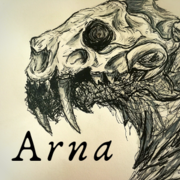My recent research on the use of biological weapons at Nagasaki spurred my interest on the role the Biological Computing Laboratory (BCL) played in pre-War science, politics, and the later founding of Minerva. It is clear to me that they developed and produced many more biological weapons in the decades following World War II.
Many of the casualties of the Vietnam War attributed to battles, bombing and disease were actually victims of extensive biological warfare. The horrific results of these atrocities led to the signing of the 1972 Biological Weapons Convention, outlawing the development and use of all biological weapons. The BCL lost its funding soon afterward and was shut down in 1974. In the official record, the story of the BCL ends there. My personal research has uncovered, however, that many of their top researchers were recruited by the Foundation, an apolitical secret organization, to continue their work.
The Archives are full of references to Secret Societies, both real and imagined. Apparently this was an issue of much interest among pre-War peoples, for there were even many sociologists who studied the unfounded beliefs in conspiracies and secret groups plotting to take over the world. How ironic that the one secret organization to escape detection was one of the only ones completely uninterested in world domination.
The Foundation, inspired by and named after the works and ideas of author Isaac Asimov, had only one goal: to preserve the knowledge and technology of the world for the fall of civilization they believed would inevitably come. Established after the terrors of World War II, the Foundation constantly sought out scientists and researchers who shared their distaste for politicians and militaries interfering in the pursuit of knowledge. After decades of the recruitment, the Foundation had a veritable army of researchers developing technological advancements well beyond the scope of their peers constrained by government grants and approval.
In the years leading up to and during the War, while many pundits prophesied that soon all would be well again, the Foundation had prepared itself for the worst. When the dust settled and the Long Winter set in, they patiently waited, knowing that in time, they would be able to lead forth in a glorious Rebirth.
-An excerpt from Diego S. Cervantez’ seminal work, Minerva’s Origins: The Foundation, circa 2087.
It is unclear when the name Minerva was adopted, but the principles and ideals of the Foundation have managed to live on. As advanced as our technology and research has become, there continues to be a general distaste for warfare and an abhorrence of weapons of mass destruction. It was only when the situation grew exceedingly bleak that Glaucus’ researchers finally deigned to develop improved weapons and technology for Aegis’ soldiers. Even now, they do so with little pleasure.
The Founders
Many current scholarly works make reference to the Founders without providing sufficient explanation for their role in Minervan history. This term, as used in the academic circles of Glaucus, refers to the original men and women who joined the Foundation before the War. The list includes notable greats such as the geneticists James Watson and Craig Venter, roboticists Victor Scheinman and Hans Moravec, neuroscientist and political theorist Nayef Al-Rodhan, and many others. In the disastrous political turmoil leading up to the war they all accepted the refuge the Foundation offered. As a result of their extensive recruitment, when the War came and society collapsed, the seeds of civilization, science and technology were preserved in the Foundation.
While none of the Founders lived long enough to see Minerva emerge from the Long Winter, the research, knowledge and ideals they brought continue to influence its course. The following is a brief selection of past Glaucan grant proposals and the Founder whose research inspired it.
Developing an Implantable Bio-mechanical Limb, by André Bellamí. Obviously inspired by Robert Playter’s work on the pre-War company Boston Dynamics’ BigDog.
Improved Energy Yield in Organic Solar Farms, by Shokufeh Sherazi. Based on the technology developed by Founder Russell Holmes.
Using E. coli to Control the Growth of Carbon Nanofibers for Armor Development, by Elior Reuter. Inspired by Avetik Harutyunyan’s work.
There are many more examples, but these are enough to show the continued impact the Founders have, even after 100 years.












Comments (0)
See all